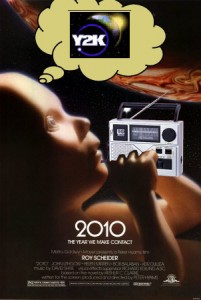Music listening has changed dramatically in the past decade in large part because of the rise of digital music. Following the explosion and shut down of illegal file sharing service Napster (1999-2001), a variety of digital music companies attempted to profit from the burgeoning interest in music delivery via the Internet.
Some focused on music subscription services (such as Rhapsody and eMusic), others turned toward music recommendations (like my former employer Uplister, which had hoped to turn the playlist into the “next unit of global music consumption”), and the legal descendants of Napster (from Apple to Amazon.com) became purveyors of MP3 downloads.
The timing of the digital music explosion couldn’t have been better; as many radio listeners were turned off by the increasingly consolidated commercial radio landscape that appeared on the scene as a result of the Telecommunications Act of 1996 which reduced limitations on the number of stations that could be held by one owner.
A direct result of the reduction in the number of station owners was less diversity on radio, with shorter playlists and fewer artists represented. As a 2002 report by The Future of Music Coalition pointed out, music fans were not pleased by this and stated that they actually “want longer playlists with more variety,” flying in the face of commercial radio’s own survey results.
So, it’s no surprise that services like Rhapsody and iTunes, where music fans could select their own playlists of music from a menu of choices would resonate so strongly with folks who had turned away from radio. Portable digital music players appeared on the scene just before 2000 with MPMan and the Diamond Rio, followed by Creative Lab’s Nomad Jukebox in 2000 and the Apple iPod in 2001.
The iTunes Music Store was launched in 2003 and the first mobile phones to incorporate MP3 players arrived in Asia the same year. MP3 players became increasingly common in many mobile phones and again Apple was a leader in popularizing their use with its introduction of the iPhone in 2007 (which had music features of the iPod built in to it).
A report issued by Bridge Ratings in 2006 pointed out that in their survey sample, young people were turning to MP3 players vs. terrestrial radio. According to the study, “12-24 year olds substantial increase in time spent with their MP3 players has significantly reduced their use of traditional AM/FM radio.”
Of course, at decade’s end we’re seeing massive convergence to such a degree that devices like the iPod may not necessarily be as big of a threat to traditional radio as they once seemed. Some portable music players and phones actually contain FM radios and may serve to draw in new listeners, whereas many others allow for the streaming of radio or the playback of broadcast archives.
As a radio DJ and indie radio fan I still have a preference for expertly curated radio playlists vs. iPods on Shuffle, but the lines keep blurring. Some lazy college radio DJs just plug their iPods into the board instead of hand-selecting CDs and pieces of vinyl to play over the airwaves and some iPod owners lovingly craft playlists that would be the envy of any college radio fanatic.
And then there’s commercial station RXP in New York City, which actually has an on-air feature called “Spin Matt Pinfield’s iPod,” in which listeners chose a number between 1 and 8000 in order to hear a random track from the morning show DJ’s iPod; thus bringing the whimsy (and breadth) of an iPod’s library to the commercial airwaves. So who knows, perhaps the iPod (and certainly consumers’ preference for massive choice in music) will help to spice up commercial radio yet.



